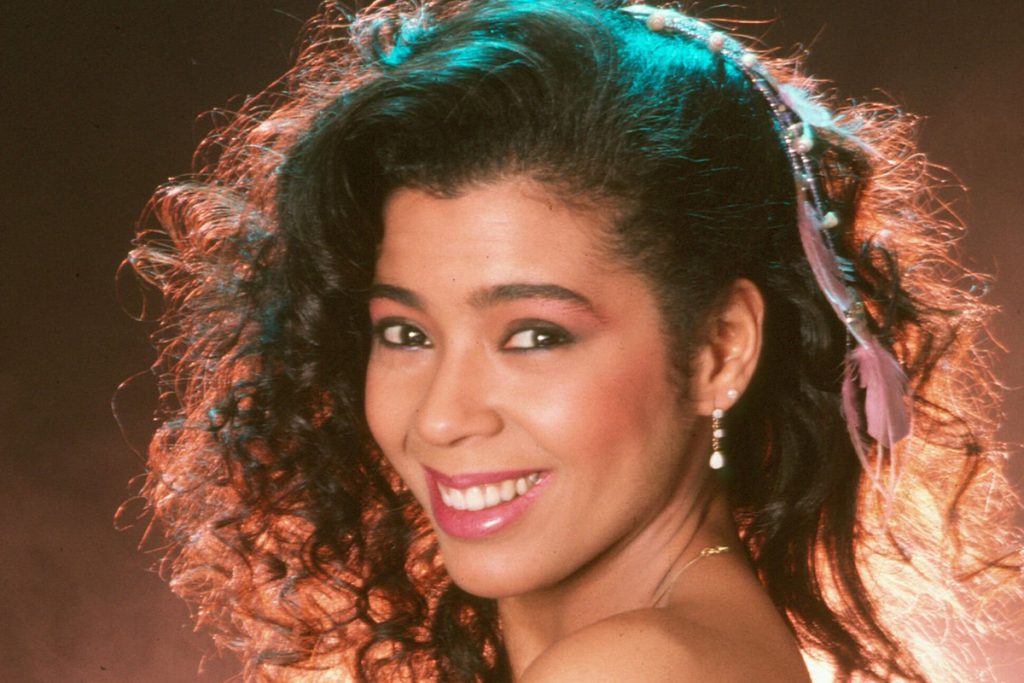Insert Foot: Irene Cara had sneaky secret fans back in the 1980s

Actress and singer Irene Cara in Los Angeles in 1983. Photo by Harry Langdon/Getty Images.
I had no clue Irene Cara dying would make me sad.
The ’80s were horrible for more reasons than I can cram into a column – and those were my high school years; the ones we all glamorize because we weren’t experienced enough with this thing called life (electric word, “life”) to understand it’s little more than a sizzling hellscape for many who aren’t white and well off.
I loved the ’80s at the time, of course. What young white kid from the safe suburbs not listening to the Dead Kennedys (we all should’ve; those were the smart kids) wasn’t happy? We were sold a warped, selfish worldview that good white kids finished first, to hell with everyone else.
When I think of the ’80s, I think of Ronald Reagan convincing people everything couldn’t be better. “Don’t Worry, Be Happy” was essentially the theme of Reagan’s domestic agenda. His answer to AIDS was “Don’t worry, they deserve it,” and he might as well have stood at the White House front door with bags of money to hand out to CEOs lining up like every day was Halloween.
But Irene Cara—who passed away Friday at 63—and her uplifting, positive music never got old. And I’m not sure why.
Maybe because she always sounded like she meant every syllable. The songs were upbeat and she was almost pleading with us to believe her. Yes, it was packaged – and I never went much beyond hearing her music from movies and TV shows. Maybe it was because she was young and an acceptable Person of Color, because she wasn’t too dark and serious to scare the law-abiding citizens of America like those rappers with African names telling us we shouldn’t support Apartheid.
Through the 1980 film version of “Fame,” and later as the voice of the very compelling (admit it) “Flashdance” theme “What a Feeling,” Irene Cara became well known, an Oscar and a Grammy winner, which seemed to drive her farther into theater, instead of getting shaped by record execs into an MTV talent. She had the pipes, the looks and the appeal to be a superstar. She seemed to choose her own way.
My friends and I, wearing clothes with zippers that went nowhere and believing in the musical sophistication of Mötley Crüe at the time, never openly listened to Irene Cara.
Around 1985, I found a buddy’s black Camaro (or whatever kind of black muscle car he drove that week – I paid as much attention to cars as I did ICBMs when I was 18). He left it unlocked in the parking lot of the community college we both attended.
I used to do this thing where I’d leave a note on someone’s car, apologizing for the door ding, or scratch, or loose bumper I accidentally allegedly caused. Then I’d leave a fake name and the phone number of another friend.
So after my friend spent 20 minutes looking for the damage that wasn’t there, they’d call the number of an acquaintance (back then we remembered phone numbers). And by the time they spent another 15 or 20 minutes figuring out what I did to them, I had a story to tell for the next 30 or 40 years.
I had no pen, so I went into his unlocked car to look for one. And right there, sticking out of his stereo, was the “Flashdance” soundtrack.
Dude … WTF?
While I inwardly laughed at his spineless stupidity, “What a Feeling” secretly crawled up off the tape, into my ear and wrapped around my brain. I remember this very specifically, because I felt very conflicted as a rock guy who emptied cans of hairspray on weekends. I wrote the note and left … and the song stayed there, until I went home and – unable to take it anymore – grabbed my mom’s copy of the “Flashdance” soundtrack, like a drug fiend needing his fix.
It really was uplifting without being too schmaltzy, just like “Fame.” It was well-written (despite the production and instrumentation, which tended to drown so many otherwise good songs in the ’80s). It was dramatic but not overcooked.
I secretly listened to Irene Cara for the next few years. It was the gateway drug leading me to the “Fame” soundtrack and possibly a few showtunes down the line. Unlike my buddy, I knew to hide it well and never exposed my secret affinity for Irene Cara, lest I relive the devastating day I accidentally exposed myself as a dyed-in-the-wool “Star Trek” fan to my friends at 15 years old.
I still listened sometimes to remember a time when people really believed this stuff about making it big and talent and attitude winning out and feeling inspired about music. Part of us, no matter how old we get, have to still occasionally believe we can live forever.
Follow music critic Tony Hicks at Twitter.com/TonyBaloney1967.
